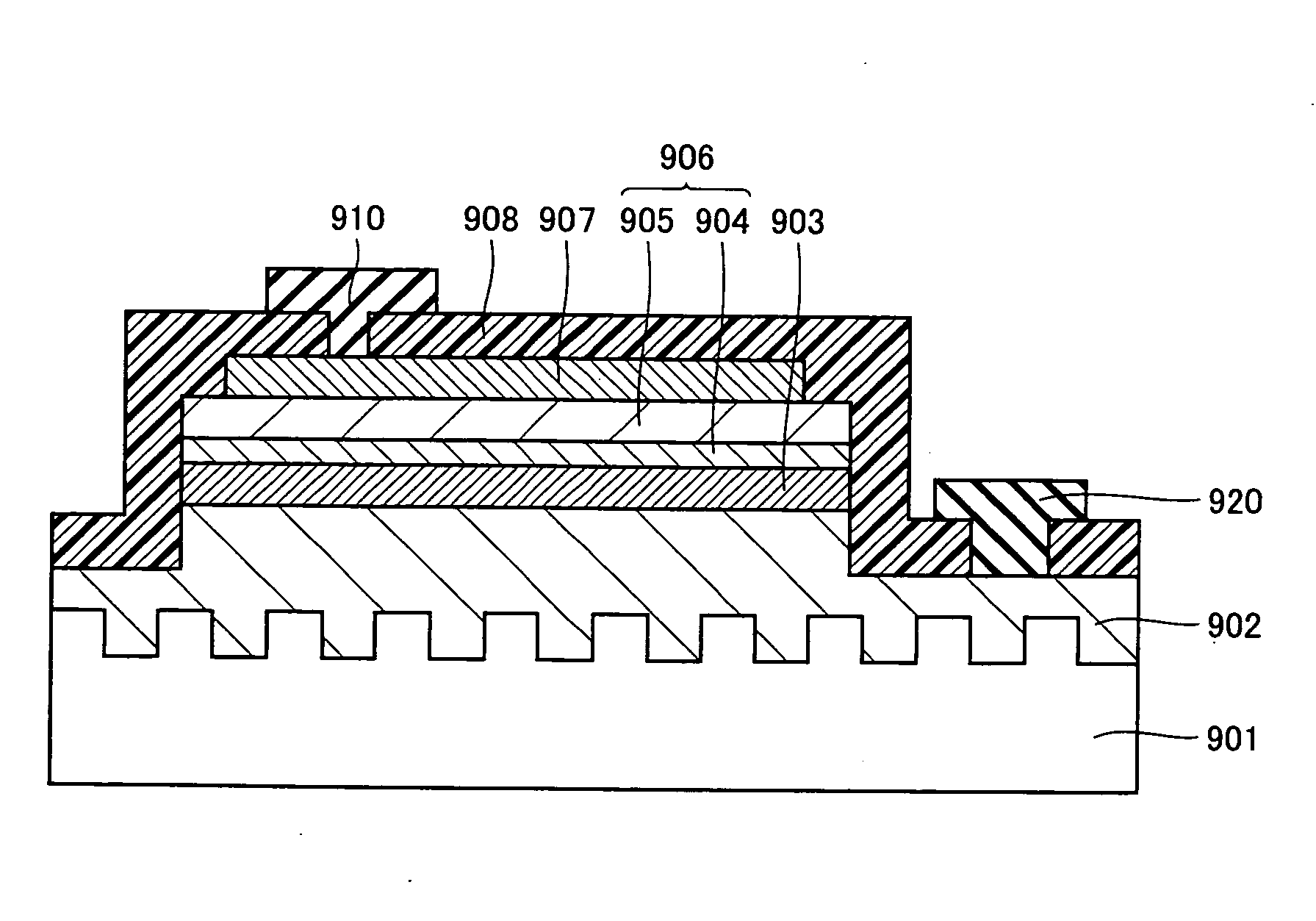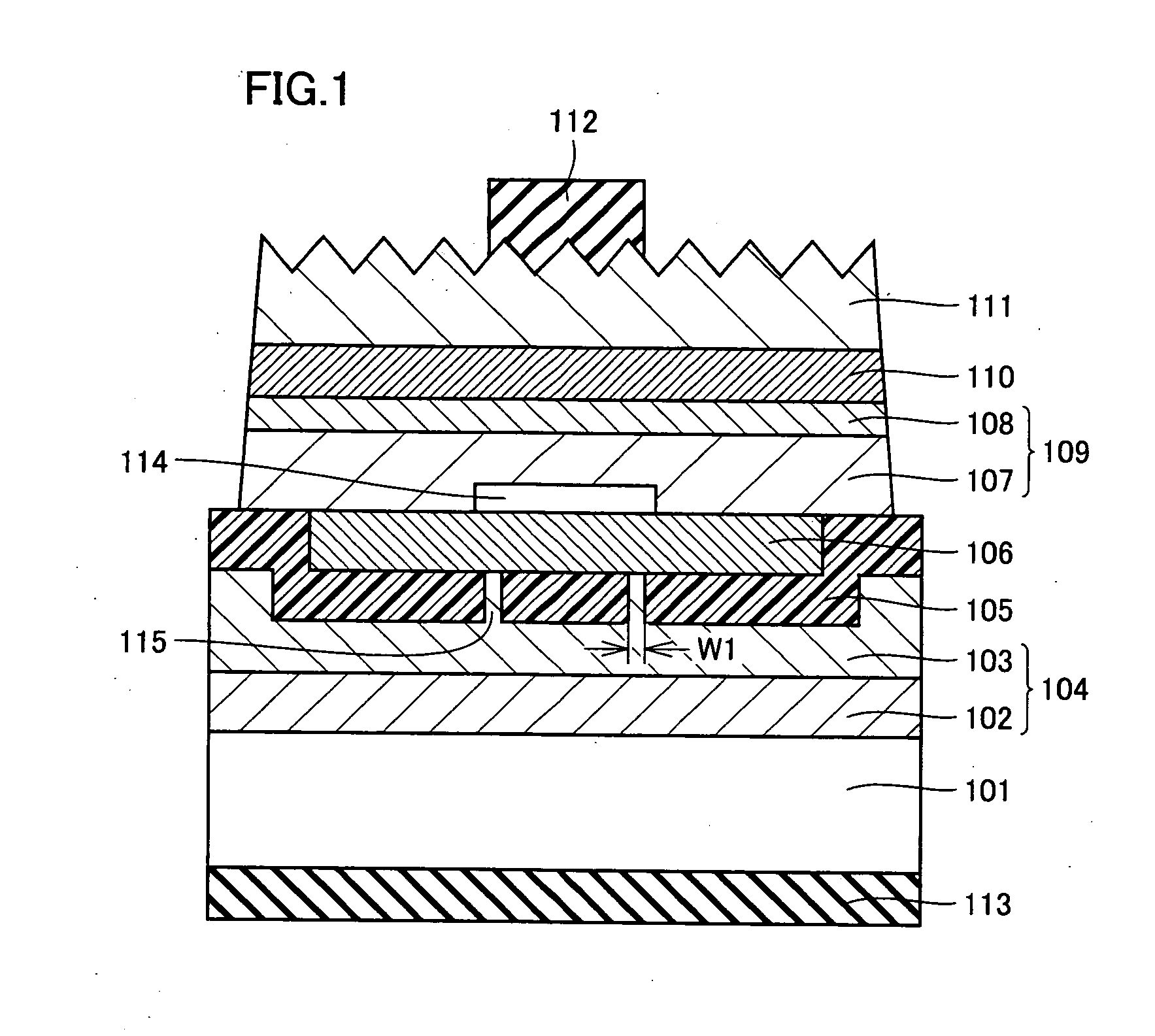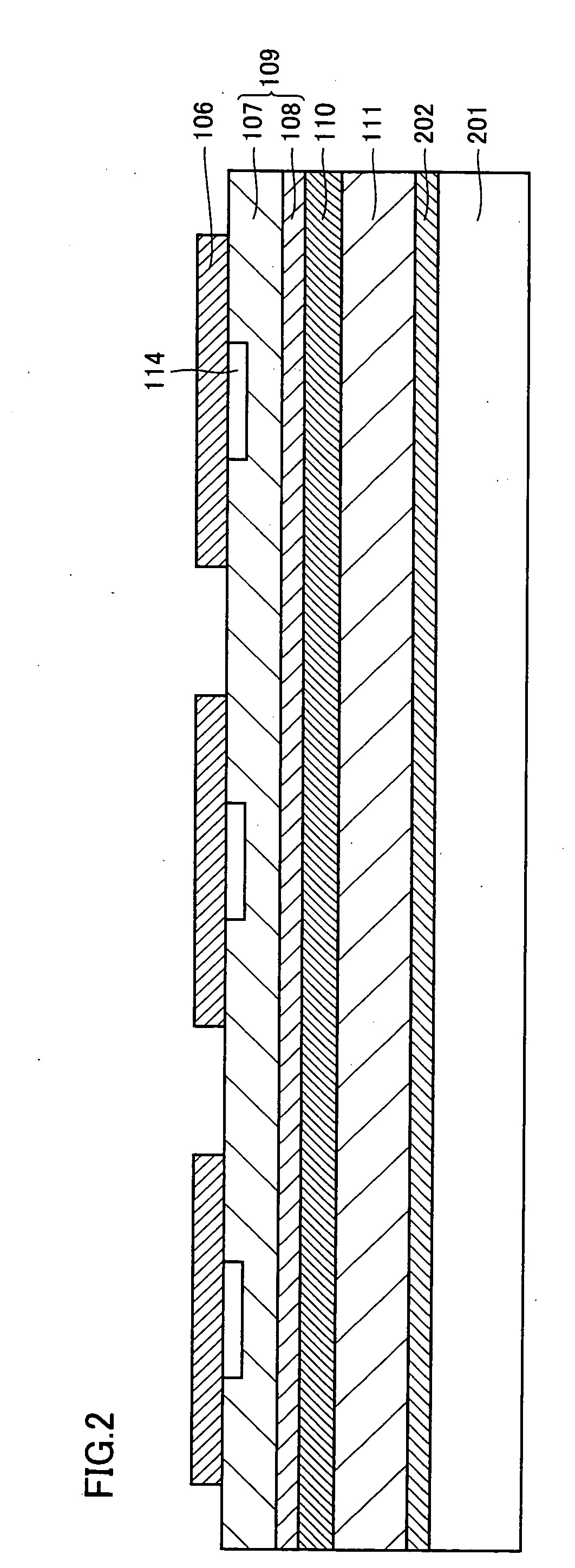Nitride semiconductor light emitting device and method of manufacturing the same
a light-emitting device and semiconductor technology, applied in semiconductor/solid-state device manufacturing, semiconductor devices, electrical equipment, etc., can solve the problems of difficult to increase the size of the chip, easy deterioration of the chip, and uneven light intensity, and achieve excellent internal quantum efficiency, light extraction efficiency and driving voltage.
- Summary
- Abstract
- Description
- Claims
- Application Information
AI Technical Summary
Benefits of technology
Problems solved by technology
Method used
Image
Examples
first embodiment
[0031]FIG. 1 is a schematic sectional view showing a first embodiment of a nitride semiconductor light-emitting device according to the present invention. The nitride semiconductor light-emitting device shown in FIG. 1 has a multilayer structure obtained by stacking a support substrate 101; a eutectic bonding layer 104 consisting of a second bonding layer 102 and a first bonding layer 103; a reflecting layer 105 made of dielectric materials; a transparent conductive layer 106; a p-type nitride semiconductor layer 109 consisting of a p-type GaN layer 107 and a p-type AlGaN layer 108; a light emitting layer 110; and an n-type nitride semiconductor layer 111 made of n-GaN in this order. A first electrode (n-side electrode) 112 is formed on the n-type nitride semiconductor layer 111 while a second electrode (p-side electrode) 113 is formed on a surface of the support substrate 101 opposite to the eutectic bonding layer 104, so that the nitride semiconductor light-emitting device has a v...
second embodiment
[0058]FIG. 8 is a schematic sectional view showing a second embodiment of a nitride semiconductor light-emitting device according to the present invention. The nitride semiconductor light-emitting device shown in FIG. 8 is different from the nitride semiconductor light-emitting device shown in FIG. 1 in a point employing a plating underlayer 803 and a plating layer 801 in place of the eutectic bonding layer 104, the support substrate 101 and the second electrode 113 in the nitride semiconductor light-emitting device shown in FIG. 1. In other words, the nitride semiconductor light-emitting device shown in FIG. 8 has a multilayer structure obtained by stacking the plating layer 801; the plating underlayer 803; a reflecting layer 805 made of dielectric materials; a transparent conductive layer 806; a p-type nitride semiconductor layer 809 consisting of a p-type GaN layer 807 and a p-type AlGaN layer 808; a light emitting layer 810; and an n-type nitride semiconductor layer 811 made of ...
example 1
[0063]A nitride semiconductor light-emitting device having the structure shown in FIG. 1 was fabricated by the following method, as described with reference to FIGS. 2 to 7: First, a buffer layer 202 made of GaN; an n-type nitride semiconductor layer 111 consisting of an n-type GaN layer having a thickness of 4 μm; a light-emitting layer 110 (having a thickness of 100 nm) which is an MQW structure consisting of six periods of GaN barrier layer and InGaN well layer; and a p-type nitride semiconductor layer 109 consisting of a p-type AlGaN layer 108 (having a thickness of 20 nm) and a p-type GaN layer 107 (having thickness of 80 nm) were grown on a growth substrate 201 of sapphire in this order by MOCVD (step (A); see FIG. 2). Then, a photoresist mask having circular openings of 90 μm in diameter at a pitch of 400 μm was formed on the p-type GaN layer 107, in order to form current blocking regions 114. Then, portions of the p-type GaN layer 107 exposed in the openings of the photoresi...
PUM
 Login to View More
Login to View More Abstract
Description
Claims
Application Information
 Login to View More
Login to View More - R&D
- Intellectual Property
- Life Sciences
- Materials
- Tech Scout
- Unparalleled Data Quality
- Higher Quality Content
- 60% Fewer Hallucinations
Browse by: Latest US Patents, China's latest patents, Technical Efficacy Thesaurus, Application Domain, Technology Topic, Popular Technical Reports.
© 2025 PatSnap. All rights reserved.Legal|Privacy policy|Modern Slavery Act Transparency Statement|Sitemap|About US| Contact US: help@patsnap.com



